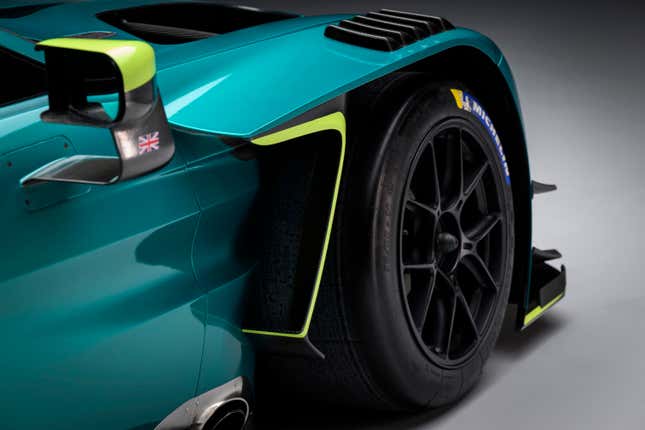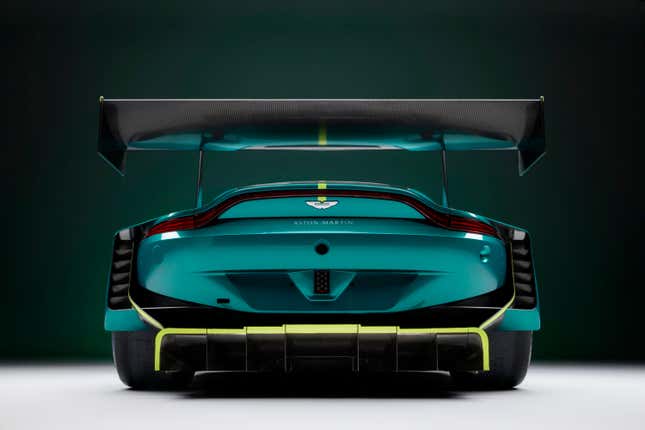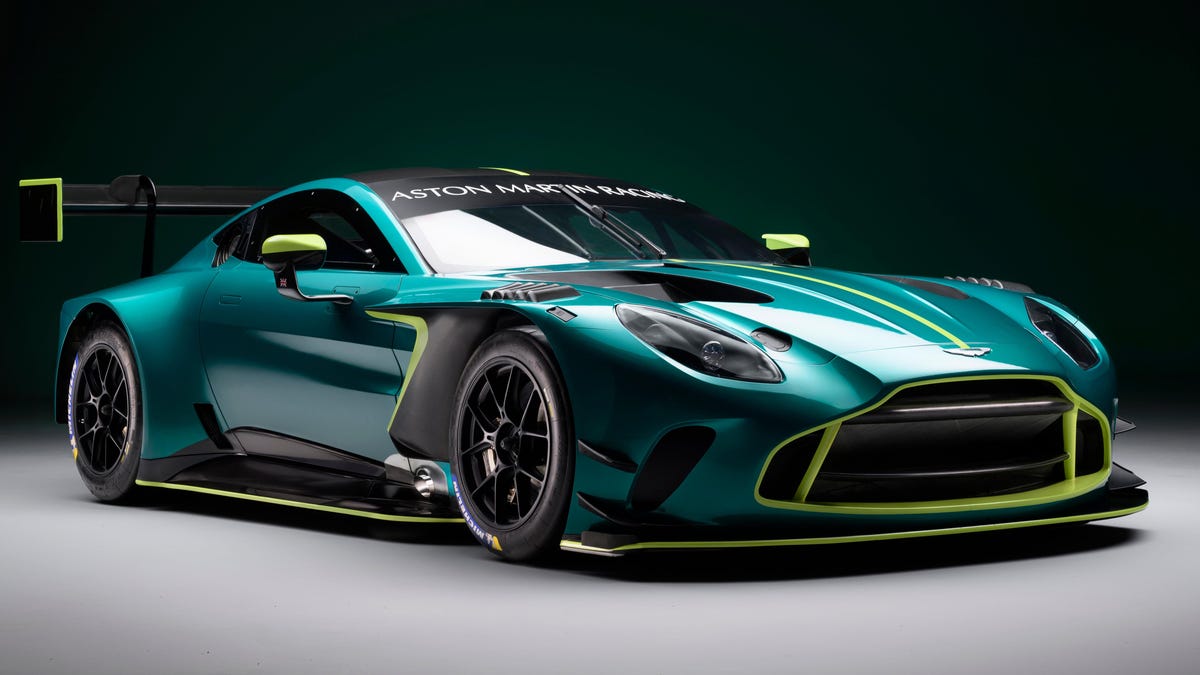Aston Martin has introduced a race car based on its new Vantage. It is packed with aerodynamic tricks to ensure it is capable of turning a faster lap time than the previous generation car it replaces. While massive hood radiator ducts and ever-expanding fender vents are de rigeur in the class now, this Aston takes them to a new level. Compared to the old car, introduced in 2019, this new model takes its aero to near-prototype levels.
Interestingly this car is just now making its full public “debut” alongside the new Vantage road car. The Vantage GT3 raced undisguised at the 24 Hours of Daytona a few weeks ago. The Heart of Racing entered two cars, one suffering electrical issues and retiring after 303 laps, while the other finished fourth in class. Magnus Racing entered one as well, though contact damage took the team out after 294 laps. IMSA has a tradition of handing new cars an extra handicap in the balance of performance process. If the car can overcome its reliability issues, it’ll probably be on the podium or winning fairly soon.

Aston Martin Racing’s Head of Performance Gustavo Betelli had this to say about the new car:
“These new generation GT3 cars are more dependent than ever on aerodynamic downforce, so we wanted to make the car more stable under braking. The old car would dive a lot under braking, so we had to try and control the pitch with the rear suspension set-up. But this meant it was stiff, which made it quite snappy and, also over-worked the tyres. Working heavily on damper tuning, we have found a much better balance with the new car so we can generate the downforce without compromising the suspension set-up. The result is much-improved progression and greater stability in all conditions. It also works its tyres much more evenly, so teams have more options on strategy. The feedback from drivers who’ve tested it has been overwhelmingly positive. Especially the amateur racers, who have been able to achieve lap times that are much closer to the Pros. Now we need to go racing!”
Created in 2005, FIA Group GT3 was meant to find a new place for cars from one-make series to compete together — think Porsche Supercup, Ferrari Challenge, Aston’s DBRS9, and Dodge Viper Competition Coupe. At the time, a Porsche GT3 Cup was about $120,000. A current spec GT3 racer is at least $600,000. Aston Martin doesn’t say how much it will cost to run its new GT3 Vantage, but judging by the full carbon bodywork, one-piece clamshell front end, and extensive CFD and wind tunnel time, it isn’t going to be cheap.

Sports car racing is cyclical. Every decade or so a new rulebook will be introduced that is meant to be a less expensive way to go racing, bringing in a new generation of privateer racers and teams to run simple cost-effective machines that are still exciting enough to develop a fanbase. And inevitably each manufacturer, team, and driver will try to find competitive advantage, lobbying the rulemakers to allow something that wasn’t previously allowed. That scope creep eventually ruins the series, running up operating costs, pushing out privateers in favor of factory-backed teams.

When this happens, the class either gets so expensive that the factories pull out, or the global economy turns and everyone abandons their racing budgets altogether. We’ve seen it happen with GT1’s collapse in 2008, GT2/GTE’s disintegration in 2021, GT3 is nearing its peak, and when it eventually dies off, GT4 will follow in its place.

On the one hand, I love to see a class blossom and develop a following. Dozens of manufacturers from all around the world compete in GT3 class racing, and each series has its own prescription for making the racing as equal as possible, which makes for exciting finishes and tight battles. On the other hand, as each manufacturer takes steps to further develop their racing versions of their road cars, the rulebook gets stretched away from the original thrifty intent.

Aston claims it will have at least thirty new Vantage GT3 cars actively racing around the world by the end of the 2024 season. This includes entries in major endurance races like the 24 Hours of Daytona, Nürburgring, and Spa, and for the first time GT3 class machinery will race at the 24 Hours of Le Mans. You can expect to see the new Vantage GT3 in Japanese Super GT, British GT, IMSA, and other international series.
I genuinely hope GT3 continues on for another decade or more before the cycle begins anew, but if manufacturers keep pushing the envelope like this, I fear it’ll be gone within a handful of years. It has proven unsustainable for a series to rely on corporate money and manufacturer marketing budgets to prop up multi-million dollar season entries in a class that has absolutely no ability to win Le Mans or Daytona overall.

